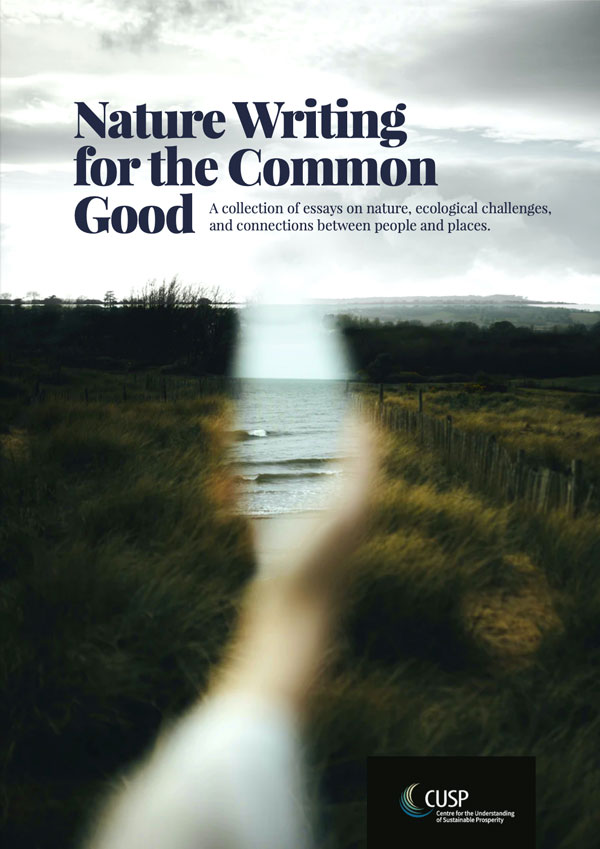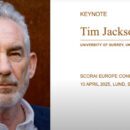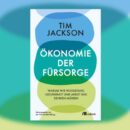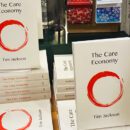Foreword to the new CUSP online collection of essays on nature, ecological challenges and connections between people and place: “Nature Writing for the Common Good”.
. . .
What is the nature of prosperity? That deceptively simple question motivates our work in the Centre for the Understanding of Prosperity (CUSP). What can prosperity possibly mean on a finite planet? How can we lead decent, healthy, fulfilling lives in ways that don’t trash the climate or lead to a catastrophic decline in biodiversity? What does it mean to live well and to be well, to flourish and to thrive, and to do so in ways that don’t jeopardise the world we leave to our children? These are the questions that motivate our research and structure our work programme.1
To inquire into the nature of something is also, of course, to ask about the relationship between that something and the natural world. To understand the nature of prosperity we must explore the ‘prosperity of nature’. That task goes beyond science or economics. It demands an engagement with humanities and the arts. If it is to mean anything at all the prosperity of nature has as much to do with the beauty of the natural world as it does with its integrity and its function. The scientist stands before the intricacy of nature and asks ‘how?’. The artist stands before its majesty and breathes ‘wow!’.
Nature writing has its roots in a seamless elision between the ‘how?’ and the ‘wow!’. The writer often seen as the originator of the genre was a country parson living an unostentatious life in the village of Selborne, just a few miles away from the University of Surrey where CUSP has its base. Gilbert White’s collection of letters and essays on The Natural History of Selborne was enormously popular when it was first published in 1788 and has remained in print ever since. It once held claim to being the fourth most published work in the English language, after the Bible, Shakespeare and John Bunyan’s Pilgrim’s Progress. That was before Harry Potter arrived on the scene, of course.2
The progression of White’s work is fascinating. It started out as a minute observational diary of local flora and fauna. It evolved into an increasingly poetic expression of the prosperity of nature. Perhaps because he straddled the two worlds, his writing was hugely influential on both scientists and artists. Darwin and Wordsworth both professed to have been swayed by him, even as art and the sciences began to diverge from each other. Accurate typology and florid prose don’t easily live together, perhaps. As science increasingly sought its legitimacy in ‘fact’, enchantment became the domain of poetry and romance.
The schism was never as definitive as its architects intended. But it led to a curious divergence between two competing myths about nature. In one of them the natural world is the site of a violent, never-ending struggle for survival—Tennyson’s ‘nature, red in tooth and claw’. In the other, ‘Mother Nature’ is a rural idyll, beneficent and infinitely kind to us. The fate of these myths through the course of the 19th and early 20th Century was a curious one. Violence embedded itself in science and economics. Beneficence retired to the domain of romance and poetry. Science became gendered to its core, dominated by masculine memes of struggle. Economics became obsessed with competition. …
Desperate to re-enchant the world, nature writing worked itself into an impossible corner, ripe for parody. And parody duly arrived in 1932, in the form of Stella Gibbons’ comic novel Cold Comfort Farm. For several decades after the novel was published, argues the nature writer Robert Macfarlane, nature writing itself went into retreat.3 Poetic descriptions of the natural world were hard to sustain in the wake of Gibbons’ satire. But there is, it seems, something irrepressible, inescapable even, in our need to convey the natural world in words. To fathom its mystery. To exalt its beauty. To tame its cruelty. To understand its existential cycle of birth and decay. The end of the 20th Century and the first decade of this one saw a powerful re-emergence of the genre.
In its revitalised form, ‘new nature writing’—as it has become known—acquired some novel traits. Still present was the poetic natural history writer—the ‘gentleman observer’ of former times. But new nature writing was also deeply informed by the ecological crisis in which we now find ourselves. One strand of writing engages in political dissent against the ravages of capitalism. Another mourns the losses that assault the natural world. A third seeks an almost therapeutic solace in our fragile connection to what remains. As my CUSP colleagues Ian Christie and Kate Oakley highlighted in their call for contributions to this collection, there is a sense in which new nature writing is ‘a huge rolling process of documentation of what we have lost, what we love, and what we fear we will lose next.’ 4
The resurgent genre is by no means free from controversy or even immune to parody. On the contrary it seems to be a more contested domain than ever. One of the most telling critiques relates to diversity. Kathleen Jamie reacts against a continuing dominance of nature writing by educated, white men. ‘What’s that coming over the hill?’ she asks, in breathless imitation of a certain breathless nature documentary narrator. ‘A white, middle-class Englishman! A Lone Enraptured Male! From Cambridge!’5
The caricature may be cruel. The point is clear. Diversity matters. Our relationship to the natural world cannot remain the preserve of elites. Who writes and who gets published; who listens and who gets listened to: these things matter deeply in a world tormented by inequalities of race and gender, income and access. The prosperity of nature is an empty promise if it remains inaccessible to the poorest in society.
Diversity was one of our principal aims for this collection of essays. And it’s clearly something we have at least partially achieved. There is considerable diversity of background, age and circumstance, within this volume. Much less diversity in gender, as it happens. Not a single one of our authors falls into the category that Jamie derides. All of our writers are women. Taken against a backdrop dominated by the Lone Enraptured Male, we should probably count that as a success.
There was something else we were looking for in this call. One of our themes in CUSP is the role of the arts in achieving a sustainable prosperity. CUSP researchers Malaika Cunningham and Marit Hammond have argued that artistic creativity is exactly what is needed to begin to imagine and negotiate a better world. The writer Lucy Neal too has pointed to the role of the ‘citizen artist’ as an agent of change. ‘When the facts and figures of climate change cannot catalyse the shifts needed in our world,’ she writes, ‘the arts can open us to different ways of seeing and feeling, creating emergent space to rethink the future and change the world—collectively.’7 Our nature writing call set out specifically to explore this idea. How can nature writing contribute to the common good, we wanted to know? Could writing about nature ‘help generate a collective and popular politics of conservation and connection’, asked Kate Oakley and Ian Christie.
There is a danger of course that, in searching within art for the change that science has so far failed to deliver, we end up instrumentalising both art and artists. That would be a mistake. And it certainly wasn’t our intention. On the contrary, it’s a central hypothesis in CUSP that art itself is intrinsic to our prosperity. Creativity is something without which human beings cannot truly be said to thrive. The nature of prosperity is in its essence creative.
None of our authors has fallen into the trap of instrumentalising art. In fact, there is less obvious evidence than we might have hoped for here to support the idea that nature writing can play any direct role in activism. The essays that follow don’t call on us to renounce capitalism. They don’t incite revolution. They don’t represent any particular call to arms at all. But there is nonetheless something compelling to emerge from this handful of pieces from unpublished authors.>
One strand picks up on the therapeutic vein that runs through new nature writing. Claire Mascall, Caroline Bateson and Sophie Lawson explore the extraordinary restorative power of nature in coping with trauma and loss. Not, as might be expected, through some elegiac appreciation of ethereal beauty. Almost the opposite. It is as much the falling leaves and the sodden earth, the scent of decay and its whispers of mortality that somehow elicit comfort. Dazzled occasionally by shafts of light. But content to find solace in the earth.
A sense of the ordinary made extraordinary is echoed by those authors who reflect on the prosperity of nature in urban environments. Liz Child, Orlaith Delargy and Mahima Sukhdev each find fascination in the endless creativity of nature’s uneasy relationship with brick and concrete. ‘Life doesn’t burst here, it wavers.’ Or else it seeks its prosperity ‘on the y-axis’ of a high-rise city neighbourhood. But we’re reminded too, that these survival strategies depend to some extent on our own, sometimes amateur role as the custodians of nature’s possibilities. And sometimes as their executioner.
Almost all of the essays convey the deeply personal nature of our relationships to nature. Words are both a mirror and a prism. Writing about anything teaches us as much about ourselves as it does about the object of our attention, as Jacqueline Hitt and Frances Voelcker both intimate. So does our fascination with nature. We are uneasy in the face of its cruelty. We are moved by its frailty. We are comforted by its cycles of renewal. These emotions matter to us. Nature needs saving, not just for its own sake, but for ours, our authors imply.
There is something in the totality of these essays which reminds me of another writer, not normally regarded as a nature writer, but a close contemporary of Gilbert White. In around 1750, Christopher Smart was about the most famous man in London—a celebrated poet and satirist; and a key figure in 18th Century society. A few years later, after an uneasy relationship with alcohol, he was incarcerated in an asylum for ‘praying too fervently in public’.
Languishing in unimaginable conditions for almost 5 years, he composed two of the most extraordinary poems in the English language, the chaotic and charismatic Jubilate Agno, and the haunting, elegiac Song to David.8 Both poems express something profound. That language is not just a lens through which we see the world. It is the means through which we continually build and rebuild it. To shape our words to the language of nature, as Smart does in his two asylum poems, is to align ourselves once again with the sly logic and slow rhythm of the planet. It’s an idea that Joanna Garrard comes closest to, perhaps, in her moving reflection on autism, nature and time. But it is a truth inherent in all the pieces you will find in the following pages.
Perhaps what we have here is, after all, a form of activism. Perhaps it contains the seeds if not of revolution then of transformation. These essays are the personal responses of unpublished writers to a casual ‘new nature writing’ challenge thrown out by CUSP a year or so ago. Their fragmented, kaleidoscopic brilliance reveals a fundamental truth: to train our poetry on the prosperity of nature is exactly what is needed if we are to reframe—and retrieve—the nature of prosperity.







